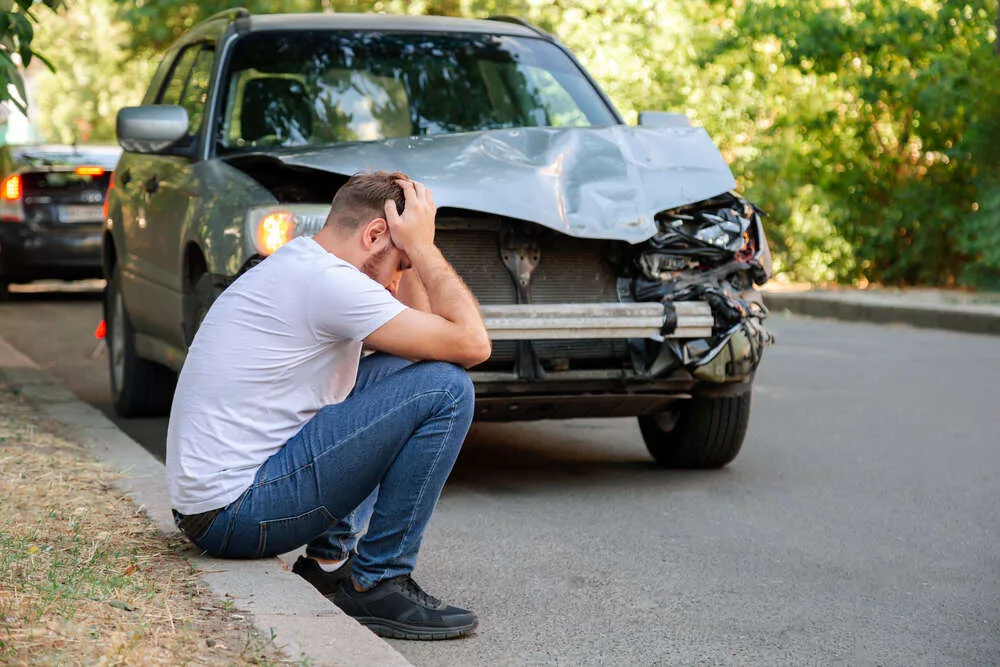Hit & Run
Criminal Defense
Hit & Run Attorneys in Southern California
Serving Banning, Blythe, San Bernardino, Palm Springs, San Diego, El Centro, Indio, Riverside, Rancho Cucamonga and surrounding areas.
Elements for Hit and Run
A hit and run is defined under California Vehicle Codes 20001 and 20002 as the failure to stop and provide identifying information after being involved in an automobile accident that resulted in property damage or personal injury. After being involved in an accident, drivers must present their driver’s license, vehicle registration, and current residential address to everyone else involved in the accident. If there is an accident involving a parked car and the other driver is not present, the driver who caused the accident must leave a note in an obvious location that contains their name, home address, and a brief description of what happened.
Vehicle Code 20001 makes it a felony for a driver involved in an accident to leave the scene when someone has been injured or killed.
There are four elements the prosecution must prove beyond a reasonable doubt in order to convict a defendant under VC 20001:
-
The defendant was driving before being involved in the accident.
-
The accident injured or killed someone other than the defendant.
-
The defendant knew or should have known another person was hurt by the accident.
-
The defendant willfully failed to do any of the following: Pull over at the scene of the accident, provide reasonable assistance to anyone who is injured, provide identifying information to the injured person or a police officer.

The prosecution must prove the defendant was the one driving before the accident to secure a conviction for a felony hit and run.
Passengers of a vehicle involved in a hit and run cannot be convicted. The driver need not have caused the accident, merely being involved in the accident requires the driver to fulfill their legal duties. A driver who is not at fault in an accident must still stop and provide their identifying information and provide reasonable assistance to anyone who is injured. For example, a driver is rear-ended at an intersection but suffers no injury as a result. However, the driver who rear-ended them is bleeding out of their forehead. The rear-ended driver must stop, give their identifying information to the other driver (if the other driver is unconscious or otherwise unable to receive the information it must be provided to law enforcement when they arrive at the scene), and provide reasonable assistance to the bleeding driver (e.g. calling the paramedics).
The prosecution must also prove that someone other than the defendant was injured or killed by the accident. If only the defendant themself is harmed by the accident they cannot be convicted of felony hit and run. Another person must be hurt by the accident for a defendant to be convicted under VC 20001.
The prosecution must prove the defendant knew or should have known,
Finally, the prosecution must prove the defendant willfully failed to perform any of the following duties after an accident:
-
1Pull over
-
2Provide reasonable assistance to anyone harmed by the accident
-
3Provide identifying information
If a defendant fails to perform even one of these duties this element of the crime will be satisfied.
“Reasonable assistance” means contacting paramedics to provide medical care for the injured party. A driver does not need to provide medical care themselves however if they do begin treating an injured driver they may be liable for any harm caused by that treatment and they must continue the treatment until professionals arrive. It is generally best not to treat an injured driver because it creates added liability and calling for professional help should always be the first response. This element of the crime requires the defendant to act “willfully” i.e. intentionally. A defendant who only accidentally fails to perform their duties cannot be convicted of felony hit and run. For example, a driver hits a parked vehicle and leaves a note on the windshield before driving off. However, a man was sleeping in the parked vehicle’s backseat and was injured by the accident. Even though the driver failed to provide reasonable assistance to the injured man, the driver did not do so willfully because he had no reason to believe there was someone in the vehicle. Therefore the driver cannot be convicted of felony hit and run because his failure to provide reasonable assistance was not willful.
Vehicle Code 20002 makes it a misdemeanor for a driver involved in an accident to leave the scene when the property has been damaged.



Four elements must be satisfied to secure a conviction under VC 20002:
-
1The defendant was driving before being involved in an accident
-
2The accident damaged property belonging to someone other than the defendant
-
3The defendant knew or reasonably should have known someone else’s property was damaged
-
4The defendant willfully failed to do any of the following: Pull over at the scene of the accident or provide identifying information.
The prosecution must also prove the accident-damaged property belonging to someone other than the defendant.
The prosecution must prove the defendant knew or should have known someone else’s property was damaged.
Finally,
Legal Penalties For Hit And Run
-
Felony hit and run can result in up to 4 years in jail and/or a fine of up to $10,000.
-
A misdemeanor hit and run can result in up to 6 months in jail and/or a fine of up to $1,000.
Legal Defenses Against Hit And Run
-
1Showing the accident did not cause any injury or death
-
2Showing it was unsafe to stop
-
3Showing the defendant was not the driver
When a defendant can show that no one was injured or killed by the accident they will defeat a felony hit and run charge.
For example, two drivers get into an accident and the driver responsible for the accident determines the other driver is unharmed then drives away without providing his information. However, the other driver got the license plate of the responsible driver and calls the police. Upset the responsible driver did not provide his information, the other driver decides to fake neck pain to accuse them of a felony hit and run. However, the responsible driver’s attorney obtains medical records showing the other driver was not injured by the accident. Therefore the responsible driver will not be convicted of felony hit and run (however he may be guilty of misdemeanor hit and run if the other vehicle was damaged by the accident.).
A defendant can also defend against a hit and run charge by showing it was unsafe for them to stop after the accident. For example, two drivers get in an accident and pull over on the side of the highway. One of the drivers is furious about the accident and exits his vehicle brandishing a knife. The other driver sees the angry knife-wielding driver and immediately drives away in fear. The driver who drove away can defeat a hit-and-run charge by showing it was unsafe for him to stop due to the other driver’s behavior.


Another way to defeat a hit-and-run charge is to show the defendant was not the one driving at the time of the accident.
Three common defenses against misdemeanor hit and run are:
-
1Showing there was no property damage
-
2Showing the defendant did not realize there was an accident
-
3The drivers agreed to a civil compromise

When a defendant can show no one else’s property was damaged by the accident they cannot be convicted of misdemeanor hit and run.
If only the defendant’s property was damaged it is insufficient for a misdemeanor hit and run conviction. For example, a driver hits a car while parking and dents his own vehicle. The car he hit however is unscathed. Therefore the driver cannot be convicted of misdemeanor hit and run because only his own property was damaged.
The defendant can also defeat a hit and run charge by showing they honestly did not know they were in an accident. For example, a driver bumps the rear fender of another vehicle on the highway during a heavy rainstorm. The heavy rain prevents the driver from realizing they hit the other vehicle. If the driver can show the weather prevented them from realizing they were in an accident they cannot be convicted of a hit and run.







